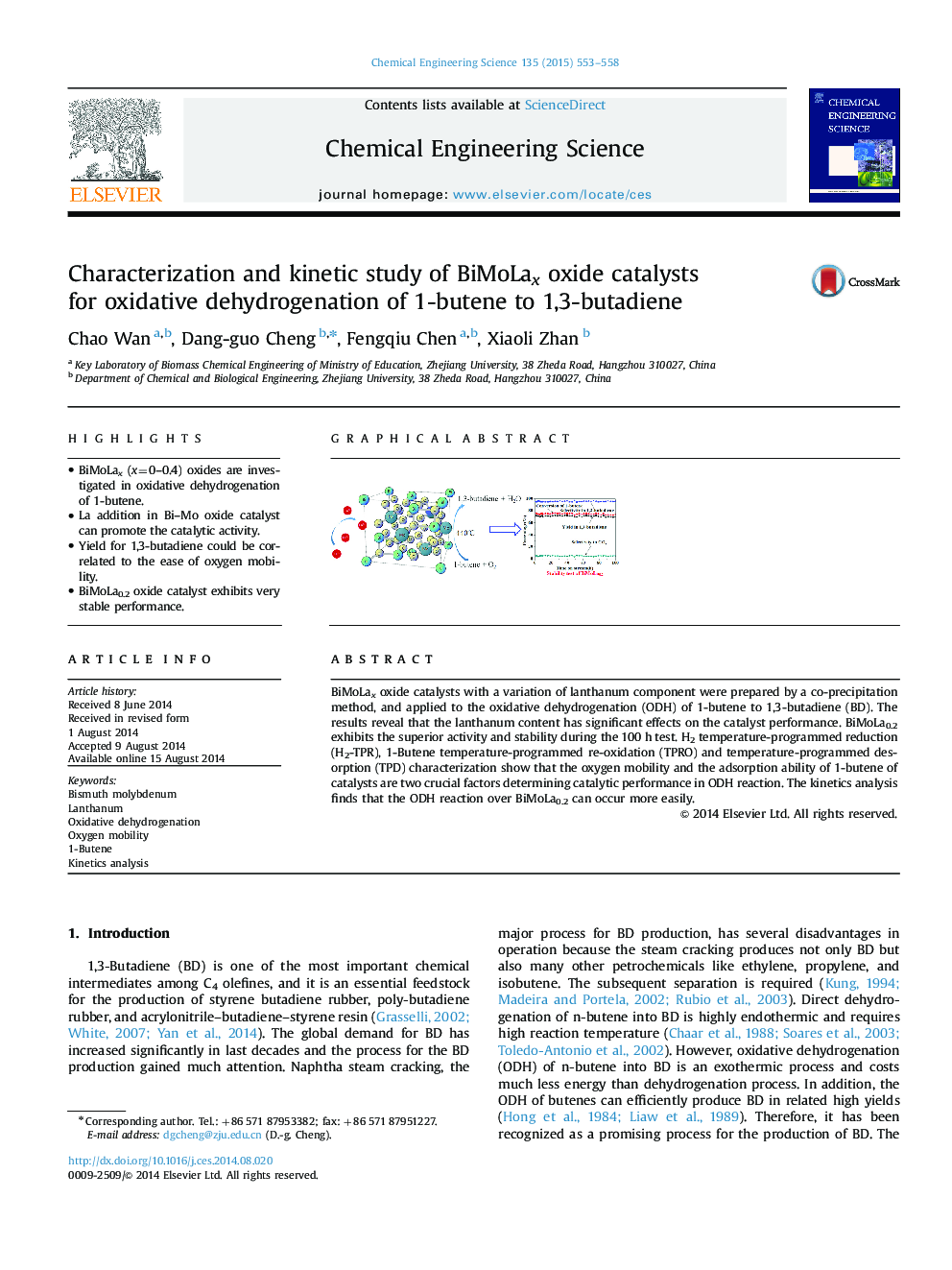| Article ID | Journal | Published Year | Pages | File Type |
|---|---|---|---|---|
| 154740 | Chemical Engineering Science | 2015 | 6 Pages |
•BiMoLax (x=0–0.4) oxides are investigated in oxidative dehydrogenation of 1-butene.•La addition in Bi–Mo oxide catalyst can promote the catalytic activity.•Yield for 1,3-butadiene could be correlated to the ease of oxygen mobility.•BiMoLa0.2 oxide catalyst exhibits very stable performance.
BiMoLax oxide catalysts with a variation of lanthanum component were prepared by a co-precipitation method, and applied to the oxidative dehydrogenation (ODH) of 1-butene to 1,3-butadiene (BD). The results reveal that the lanthanum content has significant effects on the catalyst performance. BiMoLa0.2 exhibits the superior activity and stability during the 100 h test. H2 temperature-programmed reduction (H2-TPR), 1-Butene temperature-programmed re-oxidation (TPRO) and temperature-programmed desorption (TPD) characterization show that the oxygen mobility and the adsorption ability of 1-butene of catalysts are two crucial factors determining catalytic performance in ODH reaction. The kinetics analysis finds that the ODH reaction over BiMoLa0.2 can occur more easily.
Graphical abstractFigure optionsDownload full-size imageDownload high-quality image (295 K)Download as PowerPoint slide
